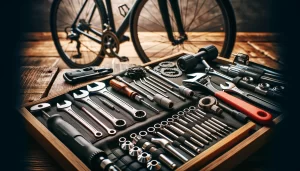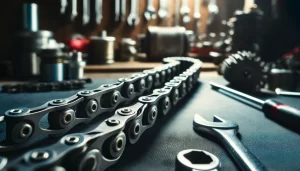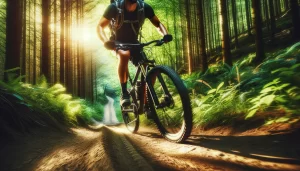When it comes to deciding between clip-in pedals vs. flat pedals, the choice can significantly impact your cycling experience. Whether you’re a seasoned road racer or a weekend trail enthusiast, understanding the distinct advantages of each pedal type is crucial for optimizing your rides.
This comparison isn’t just about preference; it’s about matching your equipment to your cycling goals and lifestyle, ensuring that every pedal stroke moves you closer to your ideal cycling experience. As you delve into the nuances of each pedal type, consider how they align with the kind of cyclist you aspire to be.
Do you value the high efficiency and control that clip-in pedals offer, especially when speed and performance are your top priorities? Or do you lean towards the simplicity and versatility of flat pedals, ideal for those who prioritize safety and ease of use? Join us as we explore these options in depth, providing you with the insights needed to make an informed decision that enhances your cycling journey.
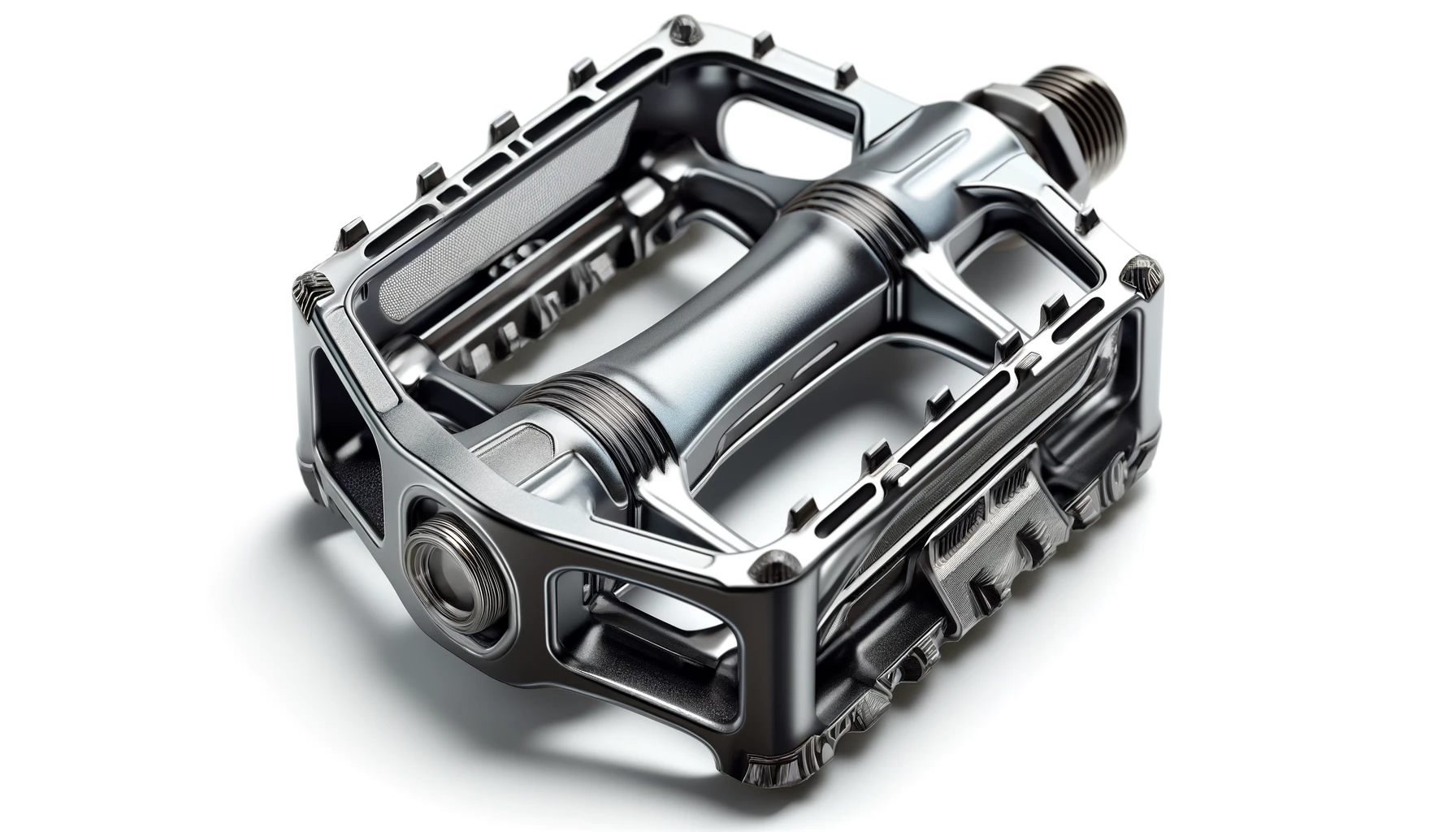
Image Source: Image Generated With DALL-E on ChatGPT
How to Choose the Right Pedal for Urban Cycling
Urban cycling presents unique challenges and choosing the right pedal can enhance your ride. The ideal pedal depends on your riding style, the frequency of stops, and comfort preferences. Flat pedals offer easy on-and-off access, ideal for frequent stops in traffic.
They require no special shoes and provide a wide platform for stability. Clipless pedals, by contrast, connect the rider’s shoes to the pedal via cleats, offering improved pedaling efficiency and control, which is beneficial for longer, uninterrupted rides through urban environments.
Tips for Selecting Urban Cycling Pedals:
- Assess Your Ride Frequency: Determine how often you stop during your typical ride.
- Consider Comfort and Safety: Choose pedals that offer stability and ease of use in traffic.
- Think About Shoe Compatibility: Ensure your pedals match your preferred riding footwear.
- Test Different Types: If possible, try both flat and clipless pedals to see what suits your riding style.
- Consult Local Cyclists: Get advice from experienced urban cyclists or local bike shops.
Differences Between Clipless Pedals vs. Flat Pedals
Clipless pedals and flat pedals cater to different cycling needs and preferences. Clipless pedals feature a mechanism that securely attaches a rider’s shoes to the pedals, enhancing pedaling efficiency and bike control.
This system is favored by many road cyclists and mountain bikers for its power transfer and quick disengagement during falls. Flat pedals, on the other hand, are more versatile and beginner-friendly, allowing easy foot removal and requiring no special footwear. They provide more freedom and comfort, particularly in urban settings where quick stops are common.
Key Points on Clipless vs. Flat Pedals:
- Efficiency: Clipless pedals improve pedaling efficiency through better power transfer.
- Safety: Flat pedals may offer safer, quicker disengagement in frequent stop-and-go urban traffic.
- Footwear: Clipless pedals require specific shoes, whereas flats can be used with any shoe.
- Skill Level: Clipless pedals typically have a learning curve; flat pedals are more forgiving for beginners.
- Comfort and Use: Consider the type of riding and comfort level with each pedal style before making a decision.
Advantages of Clipless Pedals for Road Cyclists
Clipless pedals are a popular choice among road cyclists due to their numerous advantages in efficiency and performance. These pedals, which feature a locking mechanism that binds the shoe to the pedal, provide significant benefits in terms of power transfer.
This connection allows for more force to be applied during both the upstroke and downstroke, increasing overall pedaling efficiency. Clipless pedals also offer enhanced bike control, helping cyclists maintain a consistent position on the bike, which is crucial during high-speed rides or in competitive environments. Additionally, they contribute to a more aerodynamic riding posture.
Steps to Benefit from Clipless Pedals for Road Cycling:
- Choose the Right Cleats: Select cleats that match your cycling shoes and pedal system.
- Adjustment and Comfort: Ensure your pedals and cleats are properly adjusted to avoid discomfort.
- Practice Engaging and Releasing: Get accustomed to the clipless system in a safe area before hitting busy roads.
- Optimize Pedal Tension: Adjust the tension settings on your pedals to suit your comfort and riding style.
- Regular Maintenance: Keep your pedal system clean and well-maintained to ensure longevity and performance.
Benefits of Flat Pedals for Mountain Bikers
Flat pedals are highly favored by many mountain bikers for their versatility and safety features. These pedals do not attach to the rider’s shoes, making it easier to quickly place a foot on the ground when navigating tricky trails or performing maneuvers.
Flat pedals also provide a larger surface area for the foot, which enhances stability and control during aggressive riding. They allow for quick adjustments in foot position, which is beneficial in technical mountain biking where terrain and riding dynamics can rapidly change. Furthermore, flat pedals do not require special shoes, making them a more flexible and economical option.
Tips to Maximize Benefits of Flat Pedals for Mountain Biking:
- Select Pedals with Good Grip: Look for pedals with pins and a wide platform to enhance foot stability.
- Use Appropriate Footwear: Wear shoes with a flat, stiff sole to maximize the pedal’s grip.
- Practice Foot Placement: Learn the best foot positions for different riding situations to improve control.
- Adjust Pedal Pins: Customize the height of the pedal pins to match your riding conditions for better traction.
- Regular Inspection: Check and maintain your pedals regularly to ensure they are secure and functional.
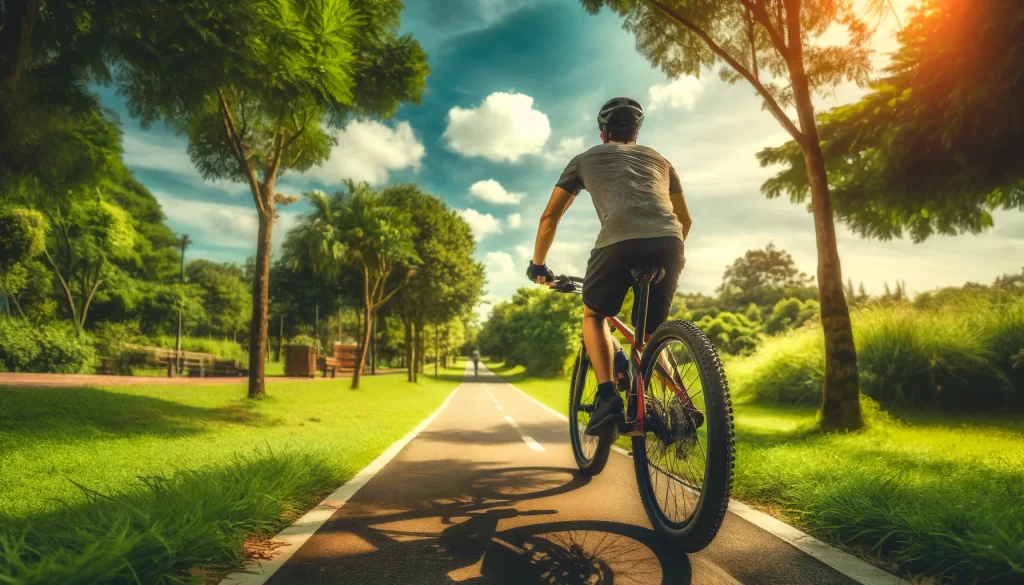
Image Source: Image Generated With DALL-E on ChatGPT
Safety: Comparison Between Clipless Pedals and Flat Pedals
When considering safety in cycling, the choice between clipless and flat pedals plays a significant role. Clipless pedals, which securely attach the cyclist’s shoes to the pedals via cleats, can offer greater control over the bike, particularly at high speeds or when performing complex maneuvers. This can lead to a reduction in accidents caused by feet slipping off pedals.
However, they also require the rider to master the skill of quick engagement and disengagement, which can be tricky, especially for beginners. The risk of not being able to unclip quickly can lead to falls in situations where stopping abruptly or balancing momentarily is crucial.
Flat pedals, on the other hand, allow for immediate foot removal, which can be advantageous in unpredictable or off-road environments. This feature provides a significant safety benefit for mountain bikers or urban cyclists who may need to put a foot down quickly to prevent a fall.
However, the lack of attachment means there’s a higher chance of feet slipping off, particularly in wet or muddy conditions, which can potentially lead to loss of control or accidents. Despite this, flat pedals are often recommended for those new to cycling or those who prioritize ease of dismount and minimal learning curve over the efficiency benefits of clipless pedals.
Final Considerations: Choosing the Ideal Pedal for Your Cycling Style
Selecting the ideal pedal requires a thoughtful analysis of your cycling style, the environments in which you ride, and what you prioritize in terms of bike handling, comfort, and safety. For road cyclists who value speed and efficiency, clipless pedals might be the better choice. They enhance power transfer, improve pedaling efficiency, and offer better control at higher speeds.
These benefits are crucial for long distances or competitive riding. However, it’s important to ensure you are comfortable with the mechanics of engaging and disengaging from these pedals, as this can greatly influence safety and confidence on the road.
For those who frequent rugged terrains or enjoy the casual aspect of cycling, flat pedals may be more appropriate. They are particularly beneficial for mountain bikers who need to navigate quickly changing conditions and require the ability to quickly remove their feet from the pedals.
Additionally, flat pedals can be more forgiving during learning phases of biking, making them a great choice for beginners or leisure riders. Ultimately, the decision should align with personal comfort levels, the specific needs of the cycling activities you most frequently engage in, and how each type of pedal complements or enhances your overall riding experience.
Frequently Asked Questions: Clipless vs. Flat Pedals for Bicycles
- What are the main advantages of clipless pedals over flat pedals?
- Clipless pedals enhance pedaling efficiency by allowing power transfer during both the push and pull of the pedal stroke. They also provide better stability and control, which can be especially beneficial at higher speeds or on longer rides.
- Are flat pedals suitable for beginners?
- Yes, flat pedals are often recommended for beginners because they allow for easy foot removal, which can boost confidence and safety when learning how to navigate a bicycle.
- Can I use regular shoes with clipless pedals?
- No, clipless pedals require specific shoes that have compatible cleats to attach to the pedals. These shoes are necessary to engage and disengage properly from the pedal system.
- What type of pedal is better for mountain biking?
- Many mountain bikers prefer flat pedals because they allow for quick foot removal in technical and unpredictable terrain, providing an extra level of safety during aggressive rides.
- Is it difficult to switch from flat to clipless pedals?
- Switching to clipless pedals can have a learning curve as you must get accustomed to the mechanism of clipping in and out. However, with practice, most cyclists can adapt fairly quickly.
- Do clipless pedals really make a difference in speed?
- Yes, for many cyclists, clipless pedals can increase pedaling efficiency, which may contribute to higher speeds and reduced rider fatigue over long distances.
In conclusion, the choice between clipless and flat pedals largely depends on the cyclist’s individual needs, preferences, and the type of cycling they intend to do. Clipless pedals offer increased efficiency and better control, making them a favored option for road cyclists and those looking to improve their ride performance.
On the other hand, flat pedals provide flexibility and ease of use, ideal for mountain bikers and urban commuters who prioritize quick foot release and comfort over pedaling efficiency. Understanding these differences and considering your own cycling habits will guide you in making the best choice for your riding style and safety.
Did you like the article? Be sure to check out more content like this in the Equipment And Accessories category, or see more related content below.


